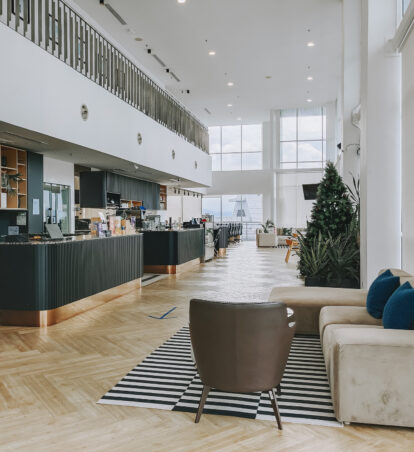Optimize Your Hotel's Website For Direct Bookings
Conversion Rate Optimization (CRO) is an essential aspect of marketing in the Hospitality Space. Its primary goal is to increase the effectiveness of your website in converting visitors into hotel guests. This process involves analyzing data, identifying areas of improvement, and implementing changes to improve the user experience, ultimately increasing the likelihood of conversion.
In this blog post, we'll cover the fundamentals of CRO, explore advanced methods, and provide practical tips to help you enhance your website's conversion rates and boost your hotel's online revenue. Whether you're a hotel owner or marketer, the information shared here will help you optimize your website for maximum conversions.
Understanding Conversion Rate Optimization
Conversion rate optimization (CRO) is the process of optimizing a website's design, functions, and content to improve its ability to convert visitors into hotel guests. The ultimate goal of CRO is to maximize the number of website visitors who take a desired action, such as booking a room, filling out a form, or subscribing to a newsletter. To thoroughly analyze these goals, you will want to start off by looking at your website's traffic sources, bounce rates, and conversion rates. Once you have identified areas of drop-off, low engagement, and friction, you can start to form data-driven understandings of how your audience is interacting with your website to better navigate the CRO space so that you can make changes to your website and overall marketing strategies to improve performance.
Common CRO Methods
There are several common CRO methods that businesses can use to improve their website's conversion rates. These include:
- A/B Testing: A/B testing involves testing two web page versions to see which one performs better. This method involves splitting your website's traffic between two versions of the same page and measuring the conversion rates for each version.
- Heat Mapping: Heat mapping involves using software to track the movement of your website's visitors. It provides a visual representation of where users click, scrolls, and spend time on a page, allowing businesses to identify areas of interest and areas that need improvement. By analyzing heat maps, businesses can make data-driven decisions to optimize their website and improve their conversion rates.
- Surveys: Surveys involve asking visitors to your website questions about their experience. This method allows you to gather feedback from your visitors and identify areas that need improvement.
Advanced CRO Methods
In addition to these common CRO methods, there are several advanced CRO methods that hoteliers can use to further optimize their website's conversion rates. These include:
- Personalization: Personalization involves tailoring your website's content to meet the needs and preferences of individual audience segments. This can include displaying personalized accommodation recommendations or showing different versions of your website based on a visitor's location or browsing history.
- Micro Conversions: Micro conversions involve tracking smaller actions that visitors take on your website, such as engaging with a certain piece of content, email, or by filling out a form. By tracking these smaller actions, you can gain detailed insights into your visitors' behavior and identify areas for improvement. Keep in mind that micro-conversions are important milestones to achieving macro-conversions such as hotel booking.
- Multi-Touchpoint Analysis: Multi-touchpoint analysis involves tracking a visitor's journey through your website and analyzing the touchpoints where they interact with your brand. This method allows you to identify areas where visitors are encountering friction and make changes to improve their experience.
Overall, CRO is an important component of marketing that can increase a company's ability to convert visitors into hotel guests. CRO involves analyzing data, identifying areas of improvement, and implementing changes to improve the user experience, ultimately increasing the likelihood of conversion.
Common CRO practices include A/B testing, heat mapping, user testing, and surveys, while advanced methods include personalization, micro-conversion optimization, and multi-touchpoint analysis. By leveraging these techniques, hoteliers can improve their website's conversion rates, increase engagement, and ultimately drive revenue. In conclusion, CRO is a vital strategy for any hotel looking to boost its online presence and drive conversions.


